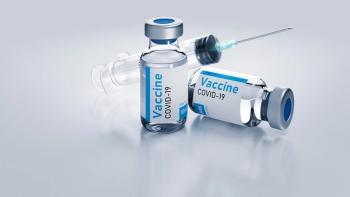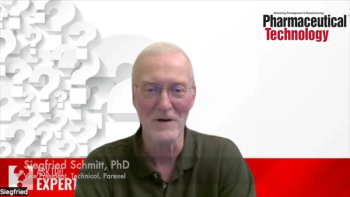
- BioPharm International-03-01-2005
- Volume 18
- Issue 3
Applying Lean Management in BioPharm Manufacturing
The BioPharma Operations Excellence Consortium, facilitated by Tefen Operations Management Consulting, continues to thrive, recently holding chapter meetings on two separate continents. The US East Coast Chapter met at Centocor's headquarters in Malvern, PA, while the European Chapter met at Sorono's facility in Vevey, Switzerland. Since its establishment in early 2002, over 45 leading biopharmaceutical companies have joined the forum, which operates on the basis of using the group's collective knowledge to drive each member company - and the industry as a whole - to world-class levels of operational effectiveness and efficiency.
The BioPharma Operations Excellence Consortium, facilitated by Tefen Operations Management Consulting, continues to thrive, recently holding chapter meetings on two separate continents. The US East Coast Chapter met at Centocor's headquarters in Malvern, PA, while the European Chapter met at Sorono's facility in Vevey, Switzerland. Since its establishment in early 2002, over 45 leading biopharmaceutical companies have joined the forum, which operates on the basis of using the group's collective knowledge to drive each member company — and the industry as a whole — to world-class levels of operational effectiveness and efficiency.
Amir London
EAST COAST CHAPTER MEETING
The theme of the East coast meeting was process excellence, exemplified by detailed case studies of companies utilizing lean management concepts and tools to drive process improvements. First, Tefen presented an overview of typical lean concepts, such as Value Stream Mapping, Takt Time, Single Piece Flow, Set-Up Reduction, 5S and Kanban, which are commonly used in a variety of industries.
Active participation was kicked off with a lean simulation. A "manufacturing" line was set up, and through the simulation, attendees saw how value-driven-flow and smaller batch sizes can result in better cycle times, lower inventories, and lower scrap. This sparked an interesting discussion around how these concepts can be applied to biopharmaceuticals, which in many cases is moving to larger batch sizes due to cost and regulatory drivers.
The group was able to discern what is different about the biotech-manufacturing model as compared to more traditional industries such as electronics, automotive, and general manufacturing. In our industry there are large economies of scale when companies move to larger batch sizes. Doubling tank capacity does not necessarily double production time because the release process takes the same amount of time for small and large batches, and setups and changeovers can be quite lengthy.
The main conclusion from this discussion was that smaller batches may not be cost-effective from a tank size perspective, but shrinking overall campaigns would be advantageous. If companies can reduce changeover time and eliminate the startup effect that impacts the quality of new campaigns, there will be a faster response to market needs by producing different products more frequently.
The Baldridge Award
Two Centocor managers made presentations. Amilcar Toro provided information on the company's overall Process Excellence organizational structure and strategy. Dan Zajac spoke about Bioreactor Antibody Optimization, providing details on a specific Process Excellence project that focused on maximizing yields in the fermentation process. He provided a comprehensive look at the methodologies and statistical tools used to model the fermentors and drive improved performance.
Peter Ryan of Bayer Technology Services concluded the day by discussing Process Analytical Technology (PAT) implementation paths within biopharmaceutical firms. He presented Bayer's use of tools and concepts and how the resulting data is mined to improve process quality and simplify the overall quality processes. Tefen's experience supports Bayer's results, indicating that companies that aggressively adopt PAT find their manufacturing efficiency increases, with a parallel drop in quality deviations. Consortium members agreed that as FDA and other regulatory agencies continue to proactively promote PAT and the industry moves forward in adopting process excellence, the use of this technology will become more critical to achieving the desired results.
EUROPEAN CHAPTER MEETING
The European meeting also focused on the applicability of Lean Tools, mainly as it relates to quality operations. The day started with a fascinating introduction given by Michele Antonelli, Serono's senior vice president of manufacturing, who described the company's operations excellence program and its use of lean, six-sigma, and benchmarking tools. Mr. Antonelli referred to the great Russian pole vault jumper Sergey Bubka who, during his career, beat 35 world records and exceeded the six-meter mark 44 times, illustrating Serono's concept of continuously "raising the bar." Jonathan Barnsley, Vevey site director, completed the introduction by providing an overview of the facility operations and future expansion plans.
The lean sessions started with a presentation by Max Boysset, Randy Plasch, and Fabrice Vericel of Baxter BioScience, Neuchatel, Switzerland. They described the quality leadership process (QLP), which is Baxter's operations excellence philosophy and toolbox. Lean is one component of this "box," and it is used with six-sigma, cost control, communication, and project management tools. Baxter has adopted the principles of the Malcolm Baldridge Program (see box) as the basis for its own Operational Excellence Award Criteria. This is a new methodology for biopharmaceutical companies, although other organizations such as Centocor are employing a similar approach. Baxter's goal is to improve its operations to qualify as the first biopharmaceutical company to win this reputable honor.
The next two sessions of the day focused on Lean Quality. Vincent Griffoul, quality director for Serono, described the challenges the Vevey site faced in trying to establish a QA department that provides an optimized balance between cost of operations, quality, and release lead time. He spoke about the procedures Serono uses to establish the relative priorities of the four performance characteristics: efficiency, quality, dependability and flexibility.
Guy Malchi, a Tefen partner, presented a proven methodology for lean laboratories, describing the critical impact of QC operations on overall manufacturing cycle time. He shared a case study in which a 29 percent cycle-time improvement was achieved in less than five months by implementing different lean-QC and change-management tools, such as: cycle-time-awareness coaching, value-stream optimization, KPI implementation, 5S, scheduling improvement, and work-in-progress visibility increase. Malchi emphasized the importance of engaging all levels of the quality organization in the project and achieving buy-in from the lab personnel, without which improvements won't be realized. He presented a proven five-step culture-change model (Figure 1) and explained how the Tefen team supports the client in building acceptance, commitment, and finally true ownership.
Figure 1: A Five-step Culture Change Model
The last session, presented by Steve Taylor, general manager of Avecia Biotechnology, dealt with a different challenge many biopharmaceutical organizations are facing — the difficulty of finding and hiring experienced process development staff, resulting in the need to recruit "biochem" graduates and post-graduates, and scientists with limited process development experience. Avecia's solution is to structurally assign new hires to teams with experienced role models to encourage active coaching and mentoring, along with providing off-line e-training tools. A dedicated team of Avecia experts produced training materials covering all phases of process development. The team has already invested more than 5,000 hours in preparing the material, and an external vendor developed e-packages for learning.
FUTURE ACTIVITY
The next BioPharma Operations Excellence column will cover consortium meetings hosted by Genzyme, Genentech, and Aventis Biotechnology. For additional information about the consortium activities, please visit the BioPharma Consortium section at Tefen web site (
www.tefen.com
) or e-mail us at
excellence@tefen.com
ACKNOWLEDGMENT
The author wishes to thank Marc Puich, Director at Tefen, for his contribution to this column.
Amir London is a partner at Tefen Ltd., 1065 East Hillsdale Boulevard, Suite 112, Foster City, CA 94404-1615, 650.357.1120, ext. 115, fax 650.372.1120,
Articles in this issue
almost 21 years ago
From the Editor in Chief—Consumers and Personal Responsibilityalmost 21 years ago
Regulatory Beat: Manufacturers Struggle with Vaccine Production and Supplyalmost 21 years ago
Final Word: The Public Side of Science: The Cloning Three Ring Circusalmost 21 years ago
Assessing and Managing Risks in a GMP Environmentalmost 21 years ago
Microarray Applications in Drug Discovery and Developmentalmost 21 years ago
Strategies for Extending the Life of Patentsalmost 21 years ago
Making Site-specific PEGylation Workalmost 21 years ago
New and Unknown Challenges Facing Biomanufacturing: An Editorialalmost 21 years ago
Scaling Down of Biopharmaceutical Unit Operations — Part 1: FermentationNewsletter
Stay at the forefront of biopharmaceutical innovation—subscribe to BioPharm International for expert insights on drug development, manufacturing, compliance, and more.





